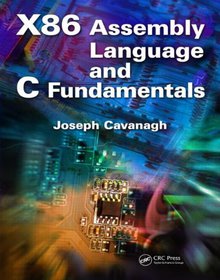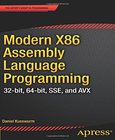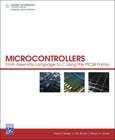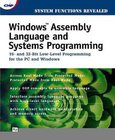X86 Assembly Language and C Fundamentals

Book Details:
| Publisher: | CRC Press |
| Series: | CRC Press , Fundamentals |
| Author: | Joseph J. F. Cavanagh |
| Edition: | 1 |
| ISBN-10: | 1466568240 |
| ISBN-13: | 9781466568242 |
| Pages: | 813 |
| Published: | Jan 22 2013 |
| Posted: | Nov 19 2014 |
| Language: | English |
| Book format: | |
| Book size: | 3.69 MB |
Book Description:
The predominant language used in embedded microprocessors, assembly language lets you write programs that are typically faster and more compact than programs written in a high-level language and provide greater control over the program applications. Focusing on the languages used in X86 microprocessors, X86 Assembly Language and C Fundamentals explains how to write programs in the X86 assembly language, the C programming language, and X86 assembly language modules embedded in a C program. A wealth of program design examples, including the complete code and outputs, help you grasp the concepts more easily. Where needed, the book also details the theory behind the design. Learn the X86 Microprocessor Architecture and Commonly Used Instructions Assembly language programming requires knowledge of number representations, as well as the architecture of the computer on which the language is being used. After covering the binary, octal, decimal, and hexadecimal number systems, the book presents the general architecture of the X86 microprocessor, individual addressing modes, stack operations, procedures, arrays, macros, and input/output operations. It highlights the most commonly used X86 assembly language instructions, including data transfer, branching and looping, logic, shift and rotate, and string instructions, as well as fixed-point, binary-coded decimal (BCD), and floating-point arithmetic instructions. Get a Solid Foundation in a Language Commonly Used in Digital Hardware Written for students in computer science and electrical, computer, and software engineering, the book assumes a basic background in C programming, digital logic design, and computer architecture. Designed as a tutorial, this comprehensive and self-contained text offers a solid foundation in assembly language for anyone working with the design of digital hardware.
Download Link:
Related Books:
Modern X86 Assembly Language Programming
32-bit, 64-bit, SSE and AVX
Modern X86 Assembly Language Programming shows the fundamentals of x86 assembly language programming. It focuses on the aspects of the x86 instruction set that are most relevant to application software development. The book's structure and sample code are designed to help the reader quickly understand x86 assembly language programming and the computational capabilities of the x86 platform. Book appendixes can be downloaded here: http://www.apress.com/9781484200650?gtmf=sMajor topics of the book include the following:32-bit core architecture, data types, internal registers, memory addressing modes, and the basic instruction setX87 core architecture, register stack, special purpose registers, floating-point encodings, and instruction setMMX technology ...
Microcontrollers
From Assembly Language to C Using the PIC24 Family
"Microcontrollers: From Assembly Language to C Using the PIC24 Family" provides an introduction to microprocessors and microcontrollers for either the student or hobbyist. It begins by discussing simple microprocessor architecture concepts, moves to assembly language programming in a C language context, then covers fundamental hardware interfacing topics such as parallel IO, asynchronous serial IO, synchronous serial I/O (I2C and SPI), interrupt-driven IO, timers, analog-to-digital conversion, and digital-toanalog conversion. Programming topics are discussed using both assembly language and C, while hardware interfacing examples use C to keep code complexity low and improve clarity. This book's C examples on hardware interfacing strive for ...
Windows Assembly Language and Systems Programming
16- and 32-Bit Low-Level Programming for the PC and Windows
2007 - 2021 © eBooks-IT.org



